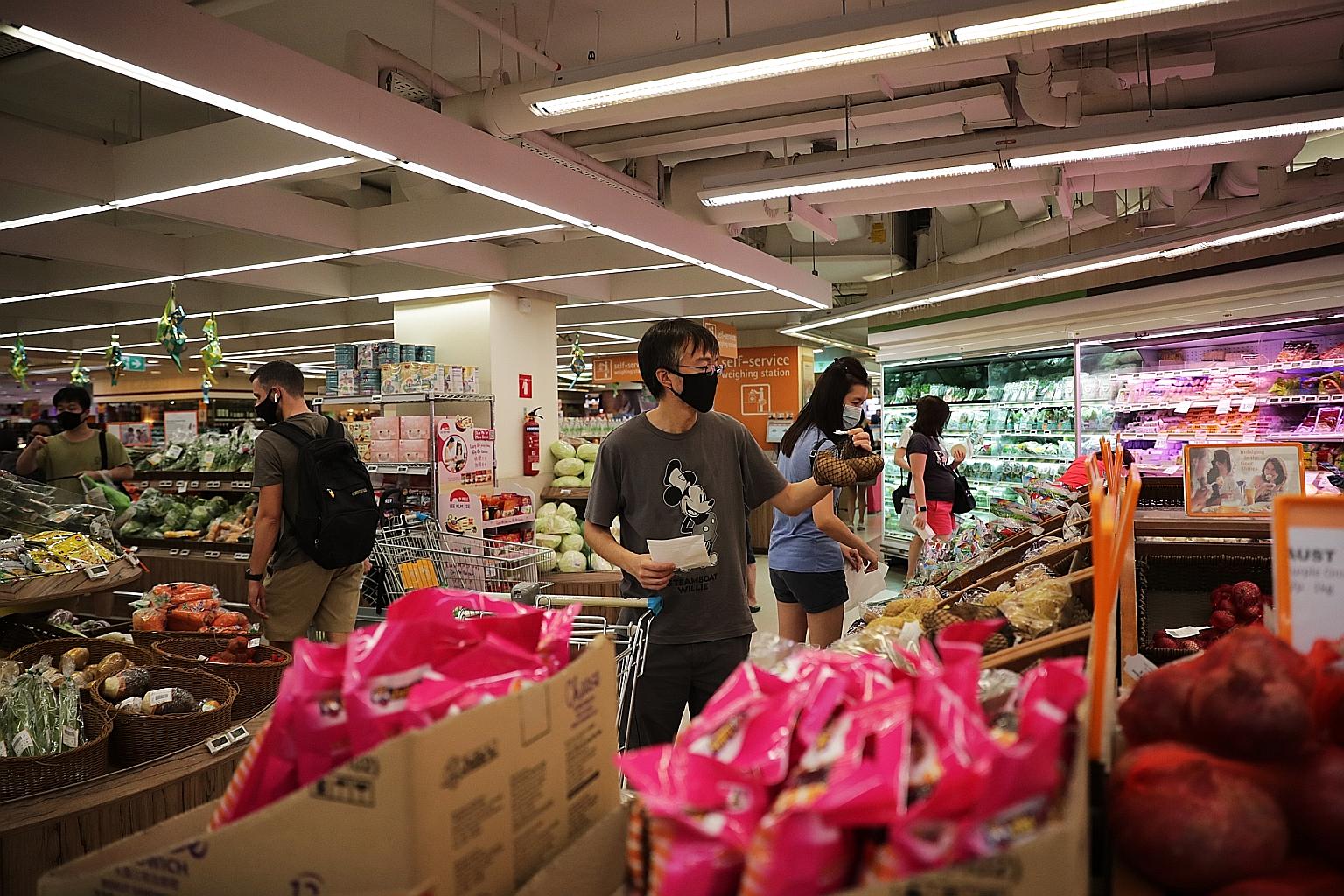MOH tracks weekly coronavirus average for better sense of trends
Sign up now: Get ST's newsletters delivered to your inbox

Shoppers at the FairPrice Finest supermarket in Bishan Junction 8 yesterday. One expert notes that a one-week moving average "is a general indicator of where trends are going" while another says that "moving average figures help everyone contextualise how well we are doing in our measures to socially distance, isolate cases and detect infections".
ST PHOTO: GIN TAY
Follow topic:
A moving average figure has been adopted recently by the Ministry of Health (MOH) to describe Covid-19 cases in the country, a statistic more indicative of the trend than daily totals, experts said.
Yesterday, Singapore reported a decrease in the number of new community cases, from an average of 39 per day in the week before, to an average of 28 per day in the past week.
The number of unlinked cases in the community has dipped slightly, from an average of 21 cases per day in the week before, to an average of 20 per day in the past week.
A one-week moving average takes the average number of cases in the last six days plus the current day, with this window period shifting continuously. This allows different factors to be considered over a period of time, as daily numbers fluctuate and may not be as useful in revealing the overall trend, Dr Wilson Goh, Assistant Chair of the School of Biological Sciences in Nanyang Technological University (NTU) told The Straits Times in an interview.
"It is a general indicator of where trends are going. A very high peak does not mean that we should be alarmed. Conversely, a big dip does not mean that we are out of the woods."
The moving average is a more conservative and practical indicator, he added, as solely focusing on high numbers may incite public alarm while sudden dips may give the public a false sense of security. The daily numbers may also change wildly as a result of critical events that may lead to huge spikes in new cases, and not all the cases may be detected in a day as well.
But both numbers - daily absolute numbers and moving averages - are important, said Dr Goh, who is also a data statistician. "The absolute numbers give us a sense of reality of what is happening on the ground while moving averages give us an idea of where the trends are going," he explained.
The use of moving averages started from April 15, but does not suggest a change of strategy at interpreting data, said Professor Teo Yik Ying, dean of the National University of Singapore's Saw Swee Hock School of Public Health.
"It's a standard way to look for trends without being distracted by outliers," he said.
The window size of the moving average also depends on what the Health Ministry would consider meaningful, allowing it to see the trend without overlooking short peaks and dips, experts said.
"Some look at averages over the past seven days, some over the past three days. All these work... there is no right or wrong here. Just a matter of preference in terms of spotting trends in the data, and a longer period of smoothing minimises the contributions of one or two days with unusual numbers," said Prof Teo, another statistician by training.
With a bigger window, some sensitivity to daily changes is lost but trends can be looked at in a more gradual manner, Dr Goh said. "With Covid-19 happening for a while, we now have sufficient data, and the ministry will be able to pick a suitable time frame on how to look at this information."
The use of moving averages is also common in other countries and fields such as the analysis of stock markets and housing prices.
It is used in evolving scenarios in which there are wide-ranging short-term variations in the data being analysed, said Associate Professor Josip Car, director of the Centre for Population Health Sciences at NTU's Lee Kong Chian School of Medicine.
"Covid-19 fits this circumstance, and so moving average figures help everyone contextualise how well we are doing in our measures to socially distance, isolate cases and detect infections."
It is also a more reasoned way of looking at the development of the virus in the population and helps to avoid knee-jerk conclusions that might result from outlying results, Prof Car added.
Countries such as the United Kingdom as well as some states in the United States report moving averages, otherwise also known as rolling averages, for case counts and death counts, Prof Teo said.

